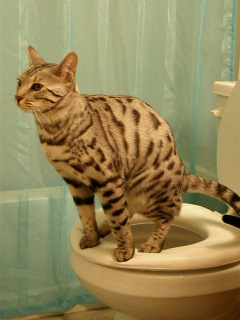Exploring Why Animal Waste Needs to Not Be Flushed Down the Toilet
Exploring Why Animal Waste Needs to Not Be Flushed Down the Toilet
Blog Article
What're your ideas about 10 Things You Should Never Flush Down The Toilet?

When it involves throwing away waste, especially animal waste, lots of people frequently turn to the convenient alternative of flushing it down the toilet. Nevertheless, this apparently simple solution can have major repercussions for the environment and public health. In this write-up, we'll check out why flushing animal waste down the bathroom is a negative idea and offer alternative techniques for correct disposal.
Intro
Correct garbage disposal is essential for preserving ecological sustainability and public health. While it may seem safe to purge animal waste down the commode, it can bring about various concerns, both for the atmosphere and human wellness.
Risks of flushing animal waste
Ecological effect
Flushing pet waste presents damaging bacteria and microorganisms right into waterways, which can negatively impact aquatic ecological communities. These pathogens can infect water resources and damage marine life, interrupting fragile ecological communities.
Public health worries
Animal waste contains damaging germs such as E. coli and Salmonella, which can pose significant health dangers to humans. Flushing animal waste down the toilet can contaminate water supplies, causing the spread of diseases and infections.
Alternatives to flushing
Instead of purging pet waste down the bathroom, there are several different disposal techniques that are much more eco-friendly and hygienic.
Composting
Composting animal waste is an eco-friendly means to get rid of it. By composting, organic matter is broken down into nutrient-rich soil, which can be utilized to fertilize gardens and plants.
Garbage dump disposal
Getting rid of animal waste in a landfill is one more option. While not as eco-friendly as composting, it is a safer option to flushing, as it avoids the contamination of water sources.
Pet dog garbage disposal systems
There are customized pet waste disposal systems available that safely and hygienically get rid of animal waste. These systems frequently utilize enzymes to break down waste and eliminate smells.
Actions to correct animal garbage disposal
To make sure correct disposal of pet waste, comply with these actions:
Scooping and landing waste
Consistently scoop and bag animal waste using eco-friendly bags. This stops waste from infecting the setting.
Utilizing designated waste bins
Dispose of bagged animal waste in assigned waste bins, such as garden compost containers or garbage dump bins. Stay clear of flushing it down the bathroom in any way costs.
Cleaning up litter boxes and pet areas on a regular basis
Consistently clean litter boxes and animal locations to prevent the buildup of waste and bacteria. Use pet-safe cleaning items to maintain hygiene.
Benefits of appropriate disposal approaches
Taking on appropriate disposal methods for pet waste supplies several benefits:
Minimized environmental pollution
Proper disposal techniques decrease the threat of environmental pollution, safeguarding rivers and ecosystems from contamination
Minimized threat of water contamination.
By staying clear of flushing animal waste down the toilet, the danger of water contamination is significantly reduced, safeguarding public health.
Improved sanitation and hygiene
Correct disposal methods advertise much better hygiene and hygiene, producing a more secure atmosphere for both people and animals.
Verdict
In conclusion, purging pet waste down the commode is damaging to the atmosphere and public health. By adopting different disposal techniques and complying with correct waste monitoring techniques, we can lessen the adverse influence of animal waste and add to a cleaner, healthier earth.
What To Do With Dog Poo – The Do's And Don'ts Of Disposing Of Faeces
Dog poo bins
Some councils provide dedicated dog waste bins in popular dog-walking areas that can take dog poo that has been bagged but you can legally dispose of dog waste in any public litter bin, as long as it is securely bagged. This also applies to your wheelie bin at home.
Do not flush
Water companies do not recommend flushing dog faeces down the toilet because certain parasites can survive the water processing treatment and are potentially harmful to humans. You should also never consider flushing dog poo that has been bagged down the toilet as the bags will not break down and instead create severe blockages in the sewage system.
In the woods
The Forestry Commission promotes a ‘stick and flick’ method for dealing with waste in the woods. This means finding a stick and using it to flick any poo from off the path so that it is out of the way of other walkers. You could also bury it as long as it is not in an area where there might be livestock.
Livestock
Parasites found in dog poo can be transmitted to livestock if they inadvertently eat infected faeces that has been left on grazing land. This could result in the death of sheep or abortion in cattle so you should always make sure you pick up your dog’s waste in fields where livestock could be present.

Consistently clean litter boxes and animal locations to prevent the buildup of waste and bacteria. Use pet-safe cleaning items to maintain hygiene.
Benefits of appropriate disposal approaches
Taking on appropriate disposal methods for pet waste supplies several benefits:
Minimized environmental pollution
Proper disposal techniques decrease the threat of environmental pollution, safeguarding rivers and ecosystems from contamination
Minimized threat of water contamination.
By staying clear of flushing animal waste down the toilet, the danger of water contamination is significantly reduced, safeguarding public health.
Improved sanitation and hygiene
Correct disposal methods advertise much better hygiene and hygiene, producing a more secure atmosphere for both people and animals.
Verdict
In conclusion, purging pet waste down the commode is damaging to the atmosphere and public health. By adopting different disposal techniques and complying with correct waste monitoring techniques, we can lessen the adverse influence of animal waste and add to a cleaner, healthier earth.
What To Do With Dog Poo – The Do's And Don'ts Of Disposing Of Faeces
Dog poo bins
Some councils provide dedicated dog waste bins in popular dog-walking areas that can take dog poo that has been bagged but you can legally dispose of dog waste in any public litter bin, as long as it is securely bagged. This also applies to your wheelie bin at home.
Do not flush
Water companies do not recommend flushing dog faeces down the toilet because certain parasites can survive the water processing treatment and are potentially harmful to humans. You should also never consider flushing dog poo that has been bagged down the toilet as the bags will not break down and instead create severe blockages in the sewage system.
In the woods
The Forestry Commission promotes a ‘stick and flick’ method for dealing with waste in the woods. This means finding a stick and using it to flick any poo from off the path so that it is out of the way of other walkers. You could also bury it as long as it is not in an area where there might be livestock.
Livestock
Parasites found in dog poo can be transmitted to livestock if they inadvertently eat infected faeces that has been left on grazing land. This could result in the death of sheep or abortion in cattle so you should always make sure you pick up your dog’s waste in fields where livestock could be present.

I found that entry on Should you flush animal waste down the toilet while doing a search on the internet. Please set aside a second to promote this content if you enjoyed it. Thank you for being here. Kindly come by our website back soon.
Explore Now Report this page